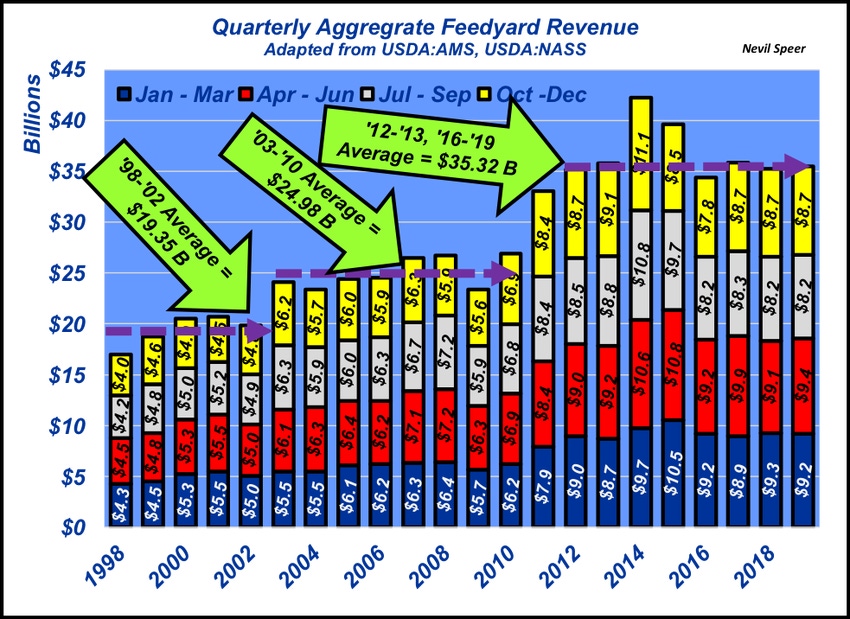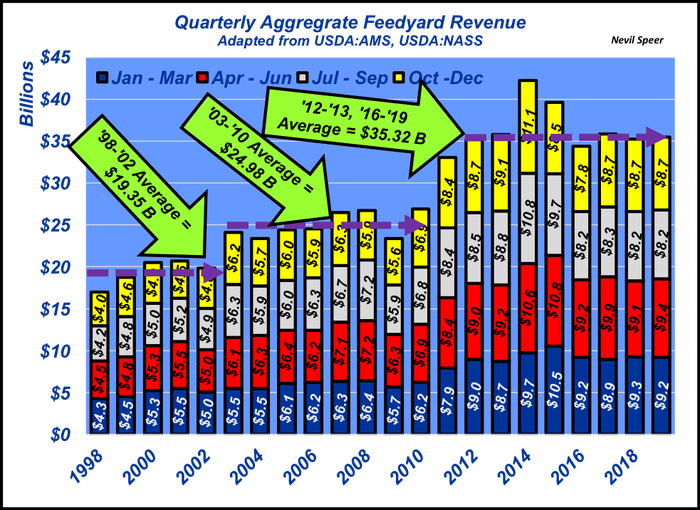Feedyard revenue through 2019
With an emphasis on revenue growth, it’s clear how important beef demand, both domestic and international, is to the total dollars available to the production sector.
March 5, 2020

Every industry is ultimately dependent on its ability to generate revenue. It’s challenging to work within stagnant industries; the inability to grow revenue hinders the potential to create new opportunities for individual businesses. With that in mind, estimation of total feedyard revenue provides some gauge of total dollars coming into the production sector. Those dollars ultimately make their way back upstream to backgrounders, stockers and cow-calf operations.
The overall trend is important monitor over time. As such, this week’s illustration highlights quarterly feedyard revenue since 1998, the low mark for beef demand. The calculation is straightforward and a function of three key components:
Average live weight
Average fed market
Number of marketed fed cattle
It’s important to note the calculation is a revenue estimate – and is NOT intended to reflect profitability; it’s simply the topline of the industry’s income statement.

There are a couple of key take-aways:
The industry seemingly makes step-wise advancements into new levels of revenue, as denoted in the graph.
Despite the market disruption stemming from the fire at Tyson’s Holcomb plant, 2019 ended up being right in line with the broader average in recent years.
With an emphasis on revenue growth, it’s clear how important beef demand, both domestic and international, is to the total dollars available to the production sector. Without demand growth, the industry would still be stuck back in the ’98-’02 benchmark.
Meanwhile, all this underscores the significance of potential impact of the coronavirus on the world’s economy in the coming year – and the potential fallout for the U.S. beef industry; the topline will undoubtedly be challenged in the next few months, at the minimum. That’s an especially key factor for cow-calf producers to monitor as they make marketing and financial plans for 2020. Cost management is critical to securing profitability. For more on that, see Cowherd trends: Returns to management.
Nevil Speer is based in Bowling Green, Ky. and serves as director of industry relations for Where Food Comes From (WFCF). The views and opinions expressed herein do not necessarily reflect those of WFCF or its shareholders. He can be reached at [email protected].
About the Author(s)
You May Also Like




.png?width=300&auto=webp&quality=80&disable=upscale)
